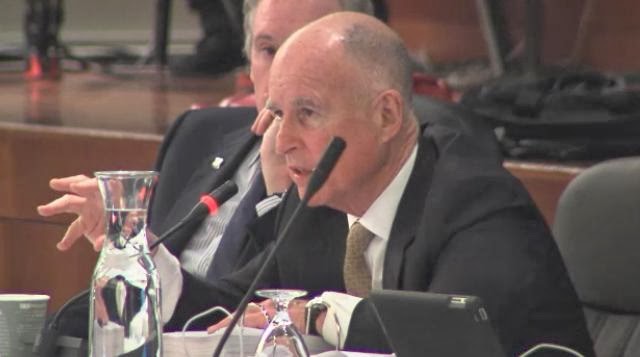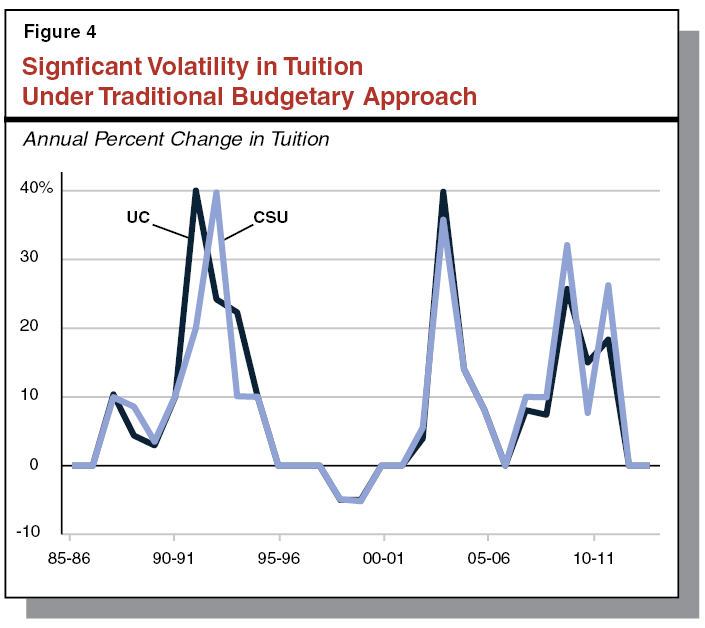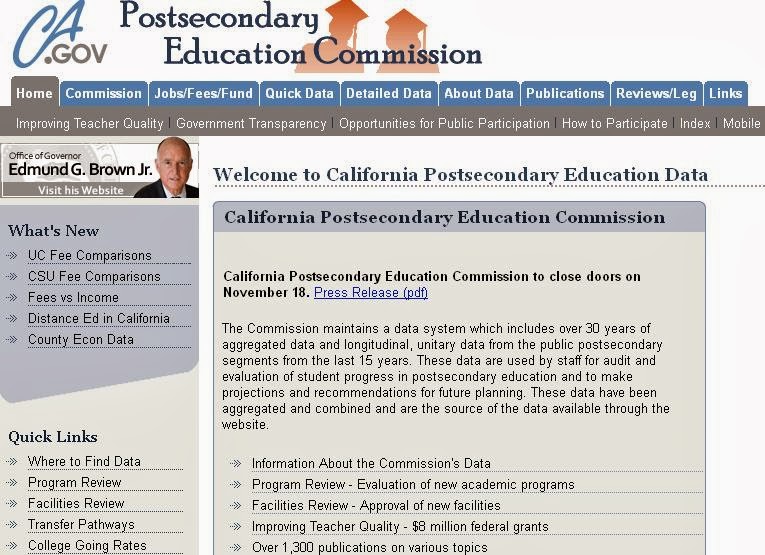The deepening pandemic depression is going to have a profound impact on the University of California budget. Unprecedented unemployment, lagging state revenue, and massive campus losses associated with remote learning make it clear that we are looking at a replay of the 2008 crisis, at least. To stay up to date on the growing crisis, Continue reading “Austerity looms. What next?”
Category: State Budget
Report: Affordable Public Higher Education is Possible Today
A report this week from Reclaim California Higher Education (a coalition of faculty and student groups) makes the case that affordable (even free) higher education is within reach for California.
The privatization experiment has failed. The harm to a generation of hard-working, high-aiming young people is proven. It’s time to return to what works: the proven Master Plan for higher education in California. California, with its own resources, can afford to restore top-quality, accessible, affordable college and university opportunity to every qualified student. In fact, Californians can afford nothing less.
You can read a summary and download the entire report at the Reclaim website.
Jerry Brown Suggests Master Plan is Dated
Our previous post covered the Jan. 22 meeting of the Regents’ Committee on Educational Policy. As noted, there was discussion of the 1960 Master Plan for Higher Education, considered a major accomplishment of Brown’s father when he was governor.
Below is a link to Brown’s comments in which he suggested the Plan was now dated.
[youtube http://www.youtube.com/watch?v=3RmjI4gVync?feature=player_detailpage]
Tradition!
The Legislative Analyst’s Office (LAO) has issued a report on UC and CSU funding. LAO is usually viewed as a neutral agency. But it is a component of the legislature. So it tends to favor approaches that add to legislative control as opposed to, say, gubernatorial control. This report is no exception.
LAO seems to want to return to what it terms the “traditional” approach to funding, but with bells and whistles added to monitor legislative goals. The traditional approach seems to be one focused on undergraduate enrollment. But in fact the tradition – such as it is – has been to forget about tradition and cut the budget during state budget crises, in the knowledge that UC and CSU can raise tuition. Indeed, as the chart above indicates, these traditional deviations from tradition dominate tuition decisions.
The LAO is uncomfortable with the habit of the governor of just proposing dollar increases not linked to enrollment and then extracting some promises from the university to do this or that, e.g., to spend $10 million on online education.
It might be noted that since LAO chose to lump UC and CSU together, it might have discussed a sore point namely the fact that CSU, as a part of CalPERS, gets its pension costs taken care of by the state whereas the state likes to stand aloof from the UC pension and its costs.
You can read the report at http://lao.ca.gov/reports/2014/education/higher-ed-budgetary-practices/budgetary-practices-021114.pdf
In any case, there is much nostalgia for tradition, albeit with some uncertainty as to what that is. Sounds familiar!
[youtube http://www.youtube.com/watch?v=gRdfX7ut8gw?feature=player_detailpage]
7 Wasn’t So Lucky
The cash statement from the California state controller for the first seven months of fiscal year 2013-14 is out. Revenues are up about 1% from last year at this time. That gain is not very good. However, it may be largely due to an aberration last fiscal year when there was a surge of personal income tax revenue in January 2013. The surge seemed to have something to do with antics back then in Washington over fiscal cliffs, etc., which might have resulted in some tax changes (but didn’t). The current DC crisis de jour is the debt ceiling, but there are assurances from Republicans that it will be fixed in time. So there is no surge for January 2014 in evidence.
You can find the latest controller’s report at: http://sco.ca.gov/Files-EO/fy1314_february.pdf
The Resurrection?
[More in our Regents coverage. See earlier posts.] The Regents spent some time on the old Master Plan for Higher Ed. There was discussion, according to news reports, among representatives of UC, CSU, and the community colleges on better coordination.
…“This report shines an important light on the need to have a central body whose sole focus is guiding the Legislature, governor and our three higher education segments as we plan and build for the future,” (Assembly speaker John Pérez) said.
Full story at http://www.latimes.com/local/lanow/la-me-ln-college-reports-20140123,0,5215408.story
Um, does no one remember CPEC, which still exists in ghostly form as a website (see screenshot above), after the legislature cut its budget to zero? It was supposed to be the coordinator. So will it be revived?
It’s really not so hard to recall such things!
[youtube http://www.youtube.com/watch?v=H2iIUcUL71s?feature=player_detailpage]
She Sure Didn’t Bumble Her Meeting with the Bee
UC prez Napolitano had a meeting with the editorial board of the Sacramento Bee recently and, evidently, said the right things:
Editorial: Janet Napolitano is showing a clear-eyed view of UC mission
Importantly, Napolitano was clear-eyed on the basic point that UC was “designed to build California,” and that its role in educating the children of California “has to be one of our primary missions.”
“We teach for California,” she said. “We research for the world.” …
Full eidtorial at: http://www.sacbee.com/2014/01/16/6075778/editorial-janet-napolitano-is.html
Is there a Changing State Attitude Regarding the UC Pension? Reading Between the Lines
As blog readers will know, UC has had difficulties in getting the state to recognize that its pension liabilities were ultimately those of the state, just as CalPERS and CalSTRS liabilities are liabilities of the state. Thanks to the two-decade hiatus of contributions, the state seemed to forget about UC’s pension. However, there is beginning to be recognition that although you can say the pension is a liability of the Regents, in the end the Regents have no sources other than the state and tuition to deal with it.
We noted recently that in his budget document describing his proposal for 2014-15, the governor listed the UC pension and retiree health obligations along with those of other state plans. The Legislative Analyst’s Office (LAO), which at one time was adamant about the liability not belonging to the state, has not been repeating that position of late. Indeed, the LAO has just released its summary of the governor’s budget plan. It notes that the governor is trying to move to what can be seen as a block grant approach to UC (and CSU) funding, rather than one based on enrollments or particular programs. LAO complains that such an approach reduces control by the legislature. In citing examples of an alternative approach, the LAO says [page 30]:
For example, the state could allocate new funding for specific purposes such as a COLA, maintenance projects, or pension obligations.
You have to read between the lines to take this as a shift in attitude towards the UC pension. But LAO could have picked other examples.
The LAO document is at: http://lao.ca.gov/reports/2014/budget/overview/budget-overview-2014.pdf
And While We Await the Governor
The state controller has issued a cash report that more revenue to the tune of about $2.5 billion arrived in the first six months of 2013-14 than was projected in the budget last June. Blog readers will recall that the governor insisted on conservative projections of revenue.
Note that the really big revenues will arrive around (income) tax time in April. If you looked at the reserve in the general fund at the moment, as seen by the controller, it is negative $18.3 billion, covered by internal and external borrowing. As many have noted, California is heavily dependent on the incomes of those at the top end of the income scale and, therefore, financial market developments.
You can find the controller’s report at:
http://sco.ca.gov/Files-ARD/CASH/fy1314_january.pdf
UPDATE: Yours truly did await the governor. But the calchannel feed failed to operate properly for roughly the first 15 minutes of the media conference, by which time much of what the governor had to say was over. Yet another online education lesson. Eventually, calchannel will post the archive of the conference.







